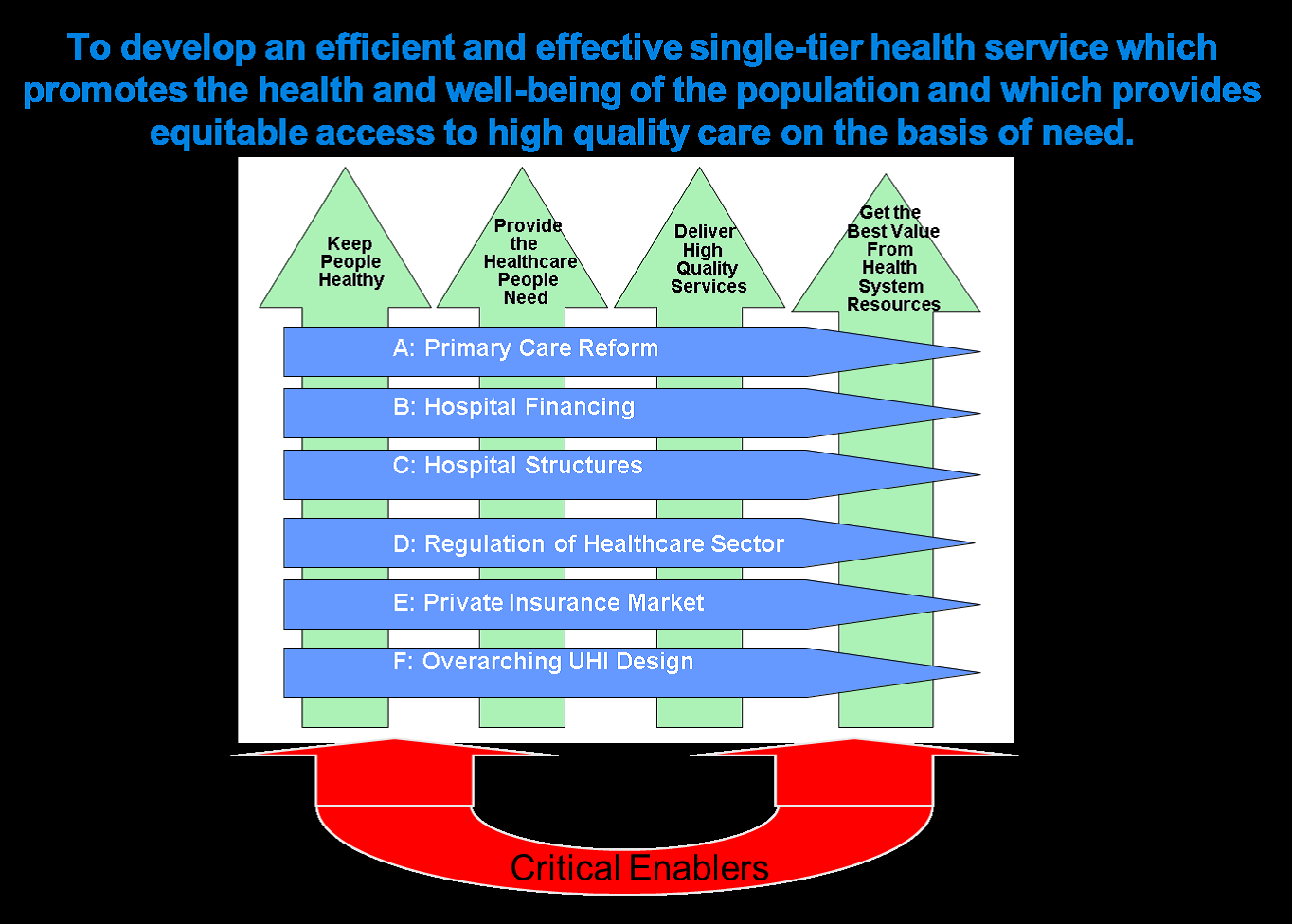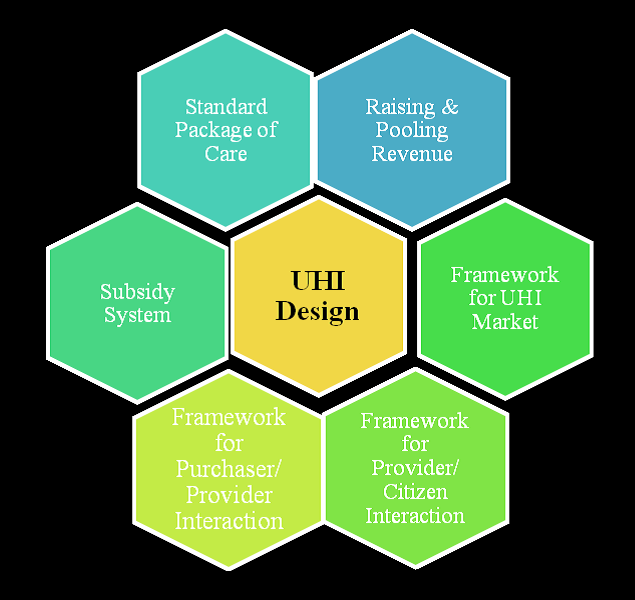Previously, we discussed the government draft paper on the proposed new funding model for Irish Public Hospitals. It was mentioned that the ‘money follows the patient model’ was to aid the move to Universal Health Insurance.
This time we will take a look at the Governments preliminary paper “The path to Universal Healthcare”.
This document can be found at the following location: www.dohc.ie/publications/ThePathToUniversalHealthcare.html
Universal Health Insurance for Ireland
As discussed previously in the section on Money follows the patient, the current two-tiered healthcare system in Ireland offers significant advantage to private patients.
Under universal Health Insurance (UHI), the government wants to provide “a single-tier health service, which provides equal access based on need, not ability to pay, and delivers the best healthcare options for Irish citizens”.
Utilising the UHI approach, all citizens would have to be insured for a standard package of primary and hospital care services. Essentially, the new approach would mean that the current model of “public” and “private” patients would be treated in the same manner with no distinction.
Currently, approximately 48% of the Irish population hold a health insurance policy. The introduction of UHI will mean it will be mandatory to hold health insurance cover. The government plans to put in place a financial support mechanism to ensure affordability, by paying or subsidising the cost for the members of society who qualify.
Purchasing of Healthcare in Ireland would essentially be undertaken by insurers. As stated in the document “Health Insurers will commission care for their members from primary care providers, independent not-for-profit Hospital Trusts and private hospitals”.
The government also propose to include regulators within this environment. The purpose of the regulators and statutory bodies is to regulate both the providers of healthcare services, and the purchasers of healthcare services, to ensure good governance and the long term viability & availability of services for the community.
Purpose and Guiding Principals
The government’s plan for UHI has at its heart, a clear desire to improve the health systems ability to achieve its core purpose.
The purpose is as follows:
- To keep people healthy
- To provide healthcare people need
- To deliver high quality services
- To get best value from health system resources
Building Blocks for Universal Health Insurance
In order to implement UHI, the policy document outlines the building blocks required below.
 Enablers of Change
Enablers of Change
The building blocks will need to be put in place to develop the UHI landscape. However successful delivery of reform will also be contingent on enabling factors. Crucial among these will be:
(i) New Transitional Governance Structures
(ii) Special Delivery Units
(iii) National Clinical Programmes
(iv) Health Information and ICT
(v) Human Resources
Developing a Universal Health Insurance Model for Ireland
Enablers of change and building blocks will prepare the ground for UHI, but a final workstream will be important, namely the UHI design workstream. The workstream encompasses the fundamental legal and structural principals which will underpin the future health system in Ireland. The purpose is to outline the rights and responsibilities of each stakeholder within the future health system. It is envisaged this will encompass over six key policy areas shown on the diagram below.

There are significant considerations from International literature that will form the basis for development of the six policy areas and in turn the development of the Universal Health Insurance model for Ireland. In shaping UHI for Ireland, the government will utilise international best practice but essentially create a model which meets the need of the Irish system and Irish people.
Next Steps
The next steps for the government is to publish a whitepaper on Universal Health Insurance to set-out details of the UHI model in addition to the estimated costs and financing mechanisms.
Conclusion
The document provides some detail on the road to UHI. It is fair to say that this move is a radical shift from the current location of the Irish Health system.
Mark Grant - Business Services Manager, Sláinte Healthcare
Mark joined Sláinte Healthcare in 2011. As Business Services Manager he has responsibility for teams working on Hospital sites, to improve the private health insurance claim revenue cycle for clients in the Irish market. Mark has over 10 years’ experience in project management and commercial roles both in Ireland and the UK and holds a Bachelor of Science degree and an MBA. Mark believes technology can deliver significant process improvements for hospitals.